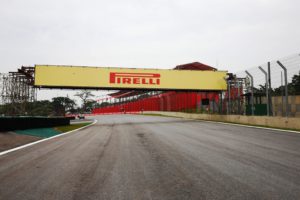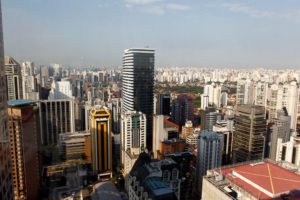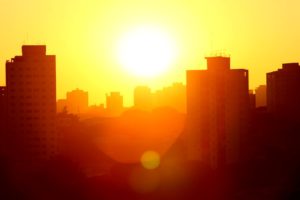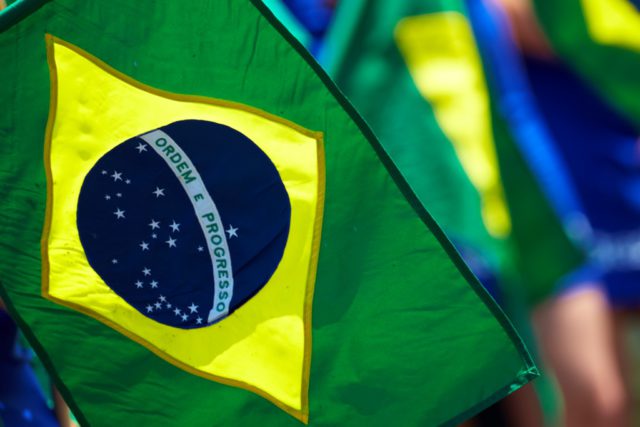The Brazilian Grand prix is the 20th round of the 2018 Formula 1 World Championship.
Total number of race laps: 71
Complete race distance: 305.909 kilometres (190.083 miles)
What kinda week? The best kind… RACE WEEK! ✊#BrazilGP ?? #F1 pic.twitter.com/hFD3CTxzl2
— Formula 1 (@F1) November 5, 2018
Pit lane speed limit: 80 kph (50 mph)

The Autódromo José Carlos Pace has hosted Formula One since 1973
First, the race was on a 7.960 kilometre (4.946-mile) layout and later on a 7.873-kilometer (4.892-mile) course from 1979 through 1999. A massive reconfiguration in advance of the 2000 Brazilian Grand Prix shortened the track to its current 4.309-kilometer (2.677-mile), 15-turn layout. Last year’s Brazilian Grand Prix served as the venue’s 35th grand prix.
Max Verstappen holds the race lap record at the Autódromo José Carlos Pace (1:11.044), set last year with Red Bull.
Valtteri Bottas holds the qualifying lap record at the Autódromo José Carlos Pace (1:08.322), set last year with Mercedes in Q3.

The Autódromo José Carlos Pace is the setting for one of the shortest laps of the year, but also one of the most intense
The undulating course is a challenge for drivers and teams. It’s run anticlockwise and consists of a twisty infield portion between turns six and12. There are three long straights between turns three and four, between turns five and six and off turn 14 down the front stretch before the beginning of the Senna “S” in turn one.
Maximum downforce would be preferred through the tight and twisting section. But in order to maximize the straights, cars need to be trimmed out with as little drag as possible. Some downforce is already lost before a wheel is even turned, as the track sits 800 meters (2,625 feet) above sea level. All of this puts grip at a premium on the relatively bumpy surface.
DYK? The traditional name of the circuit, Interlagos, comes from the track being built in a region between two large artificial lakes, the Guarapiranga and Billings, which were designed in the early 20th century to supply São Paulo with drinking water and energy power. In 1985, the speedway was renamed the Autódromo José Carlos Pace in honour of Pace, a Brazilian racecar driver who died in a plane crash in 1977. Pace’s first and only Formula One victory came at Interlagos.

During the course of the Brazilian Grand Prix, lows will range from 14-17 degrees Celsius (57-63 degrees Fahrenheit) to highs of 20-27 degrees Celsius (69-81 degrees Fahrenheit)
Relative humidity ranges from 55 per cent (mildly humid) to 98 per cent (very humid), with a dewpoint varying from 14 degrees Celsius/58 degrees Fahrenheit (comfortable) to 19 degrees Celsius/67 degrees Fahrenheit (muggy). The dew point is rarely below 11 degrees Celsius/51 degrees Fahrenheit (very comfortable) or above 22 degrees Celsius/72 degrees Fahrenheit (very muggy). Typical wind speeds vary from 3-21 kph/2-13 mph (light air to moderate breeze), rarely exceeding 29 kph/18 mph (fresh breeze).

Focus points Front braking
Interlagos is bumpy and many of the corners are cambered, which makes it easy to lock an inside front wheel under braking. This costs time and puts a car out of position. It’s particularly relevant into Turn One. That is the most obvious overtaking point on the lap because the track drops away at the apex.
Unique difficulty Fuel pick-up. Interlagos has many idiosyncrasies, such as altitude and bumps, but the long left-hand drag from Turn 12 to the exit of Turn 15 at the top of the hill presents cars with potential fuel pick-up problems. They are pulling lateral G for 12s through this sequence of corners, which can cause problems if teams aren’t prepared.
Biggest challenge The physicality of the track. It’s one of five anti-clockwise circuits on this year’s calendar. But what stands Interlagos apart is the long duration of the corners and the number of bumps. Combine these factors with the record-breaking lap times we’re expecting this year and it’s going to be one of the most demanding races of the season for the drivers.

Braking Light
This isn’t a demanding circuit for brakes, similar to Silverstone. There are only six braking events around the lap, with the hardest braking zone being on the approach to Turn One. The cars are on the brakes for 1.4s at this point on the lap, with a peak deceleration of 5.5g.
Power The cars use 1.5kg of fuel per lap, which is low. It’s indicative of the low percentage of full throttle (62 per cent).
Aero Medium-to-high downforce. In terms of altitude, Interlagos is situated significantly lower than Mexico City, scene of last week’s Mexican Grand Prix. But it’s still 800m above sea level and the altitude affects aero performance. The cars need lots of aero and mechanical grip through the twisty mid-section of the lap, but the two long straights make downforce levels a compromise.
? Trulli, Sutil and Alonso tangle
? Flying front wings
⛽️ Fuel hose chaos
? Iceman on fireThe opening lap of the 2009 #BrazilGP was CRAZY ? pic.twitter.com/dPakrsBF8i
— Formula 1 (@F1) November 4, 2018

































